St Peter's Seminary: From modernist marvel and drug rehab centre to 'Hinterland' sound and light installation
Obsolete before it opened, this Scottish seminary, so redolent of Sixties optimism, was a modern masterpiece – and in its decay, it mirrored our own misgivings. Now, says David Pollock, the ruin has a vital new role
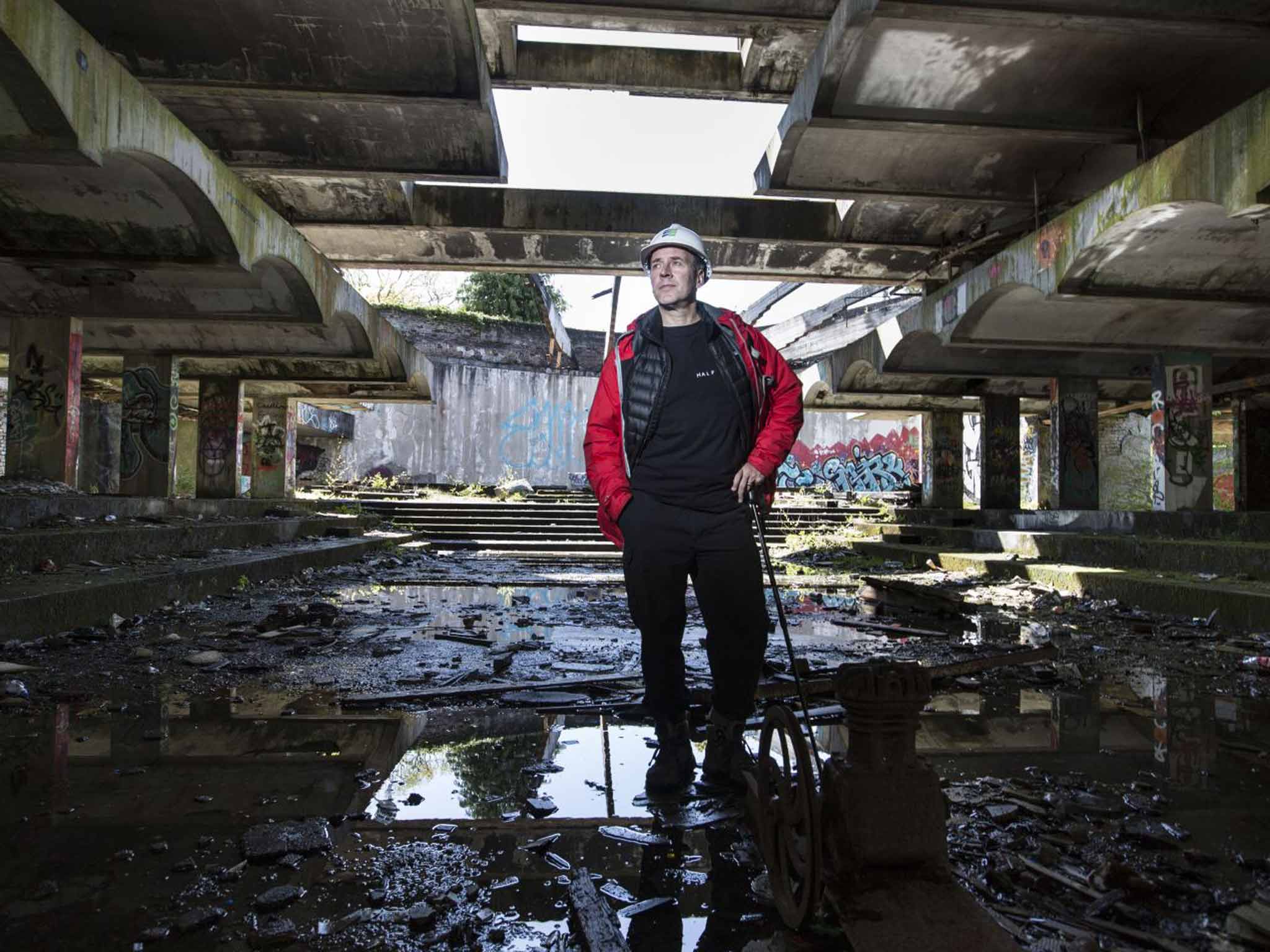
Your support helps us to tell the story
This election is still a dead heat, according to most polls. In a fight with such wafer-thin margins, we need reporters on the ground talking to the people Trump and Harris are courting. Your support allows us to keep sending journalists to the story.
The Independent is trusted by 27 million Americans from across the entire political spectrum every month. Unlike many other quality news outlets, we choose not to lock you out of our reporting and analysis with paywalls. But quality journalism must still be paid for.
Help us keep bring these critical stories to light. Your support makes all the difference.
For one of the most infamous and highly regarded modernist buildings in the UK, St Peter's Seminary was obsolete even before it opened. Created by the Roman Catholic Church in Scotland as a secluded training centre for young priests, the build took place on a country estate an hour west of Glasgow along the north bank of the River Clyde between 1961 and its opening in 1966. During this time the seminary's existence was superseded by the Second Vatican Council of 1962 to 1965, which decreed that priests should instead be trained within the communities they were intended to serve. Its purpose was gone.
The Church ceased using the building in 1980, and for the best part of the next decade it found more prosaic new use as a drug rehabilitation centre, eventually being abandoned altogether. The central Victorian house of the old Kilmahew Estate was destroyed by fire in 1995, and the more contemporary extensions have fallen victim to vandalism, graffiti, further fires and in some places catastrophic erosion. All of which adds to the mystery of St Peter's Seminary. It's category A-listed by Historic Scotland; in 2008 it was added to the World Monument Fund's watch list of 100 most endangered sites of cultural heritage; and heritage body Docomomo lists it as “a building of world significance”.
For urban explorers, chroniclers of the hauntingly abandoned and those whose appetites to view the ruined feeds a growing online subculture, St Peter's Seminary has earned legendary status. For the last eight years it's also held a deep and obsessive fascination for Angus Farquhar, the creative director and driving force of the Glasgow-based public art practitioners NVA. This month, NVA will open St Peter's Seminary to the public for “Hinterland”, a sound and light installation which will show this famous ruin in a new light. It's also the first step, hopes Farquhar, in new life for the building as a performance space, artists' retreat, public artwork and enduring monument to the often unfulfilled post-war optimism of the late 20th century.
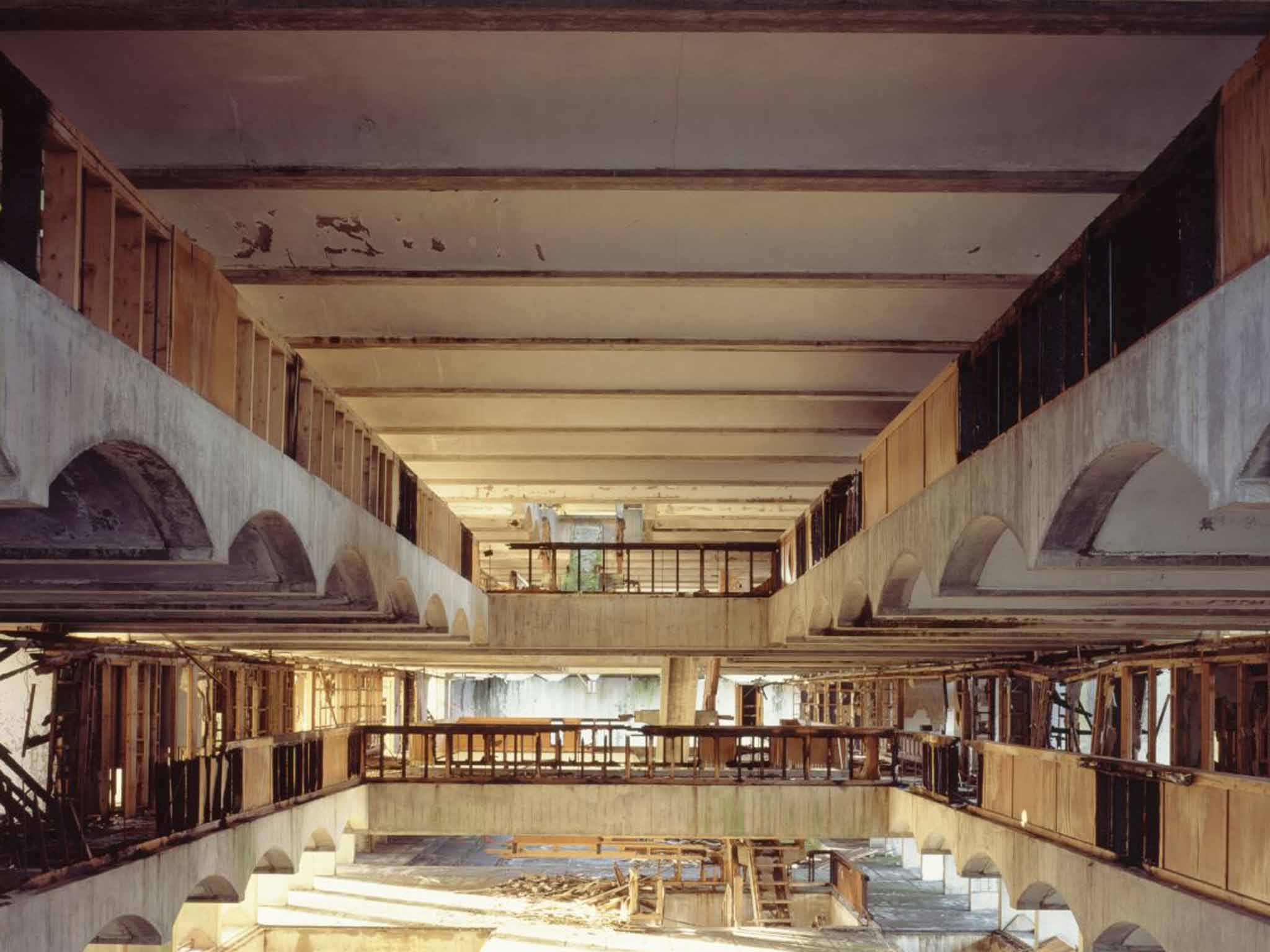
“Part of this project is about bringing value back to what, in architectural terms, has become one of the most devalued areas, which is late Modernism,” says Farquhar. “Everybody knows that most cities or towns or villages have a certain quality because they've kept the architecture of a particular period, and that gives the place an authenticity, a physical lineage and history. The high street of Edinburgh is an obvious example, where they've retained the integrity of the physical built structures. But if you go from about 1920 to 1970, vast parts of that architectural period, in terms of its large and monumental buildings, are being destroyed. This period's being erased.
“There are,” he continues, “two reasons for that. One is that the buildings themselves are often not being kept well, and the second is that the ideologies that made them have been brought into question. So if you look across Russia and Eastern Europe the architectural style reflects a totalitarian regime or a particular Communist ideology, or if you look at social housing in Britain, it's seen to represent a failed architecture which didn't deliver the dream that was promised.
“But if those buildings are well looked after – look at the Barbican or the Southbank in London, or Haggerston School in Hackney, all examples of Sixties architecture that have been kept well – you find they're often incredible, experimental structures, and an excellent record of their time.”
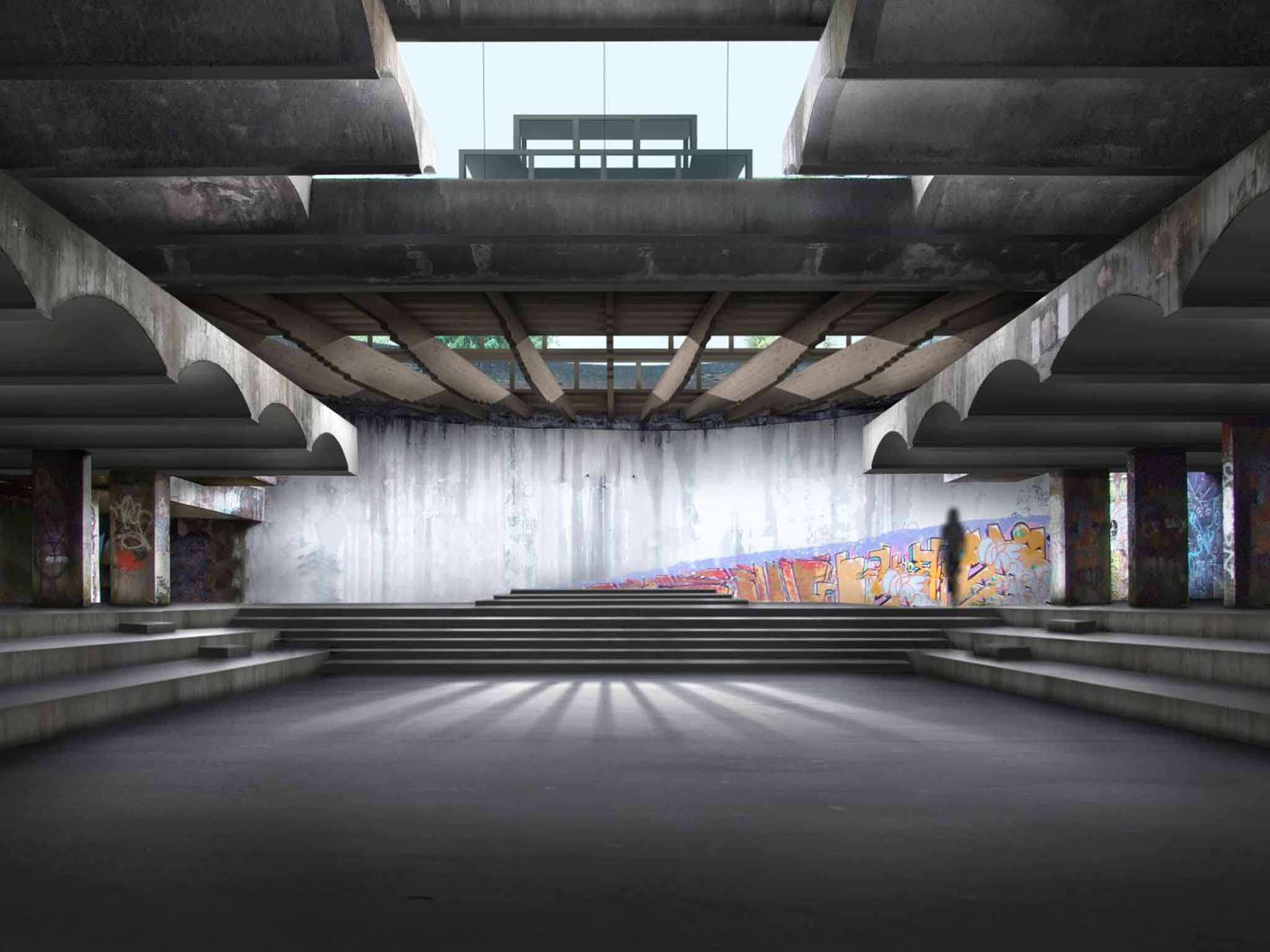
This is, at least partly, why Farquhar wants St Peter's Seminary to have new life once more. A former member of activist industrial rock band Test Dept, founded in south London in 1981, he and the group collaborated with the South Wales Striking Miners Choir in 1984 and helped to bring back the still-active Beltane Fire Festival to Edinburgh in 1989. With NVA (it stands for Nacionale Vita Activa, which means “the right to influence public affairs”) the stated intention is to “make powerful public art that reaffirms people's connection to the built and natural heritage”. Previous projects include the sound and light animation of The Old Man of Storr on the Isle of Skye; an exploration of Argyll's Neolithic landscape in “Half-Life”; and “Speed of Light”, the illumination of a landscape by hundreds of runners wearing remotely controlled light suits, which has been seen in Edinburgh, Yokohama, Salford and the industrial landscapes of the Ruhr valley.
With his pedigree it's hardly surprising that Farquhar's plans for St Peter's are borne of a certain awareness of the political context in which the building was created. “The worst thing is that the buildings which will survive from the later part of the 20th century are these kind of grotesque late-capitalist dreams like the Shard,” he says. “These corporate money buildings make me personally feel physically sick, I think they're grotesque. It's like someone who wears too much jewellery, someone adorned in 20 diamond rings, that's what a Zaha Hadid building looks like to me. They're exercises in corporate and state power. That's what I love about St Peter's, what you have is the total reverse of this architecture. All of the beauty is on the inside. All of its rigour and its poetry is contained within the building.
“Architecture which was born between the 1930s and the 1960s was born from a period of foment in the world, with world wars and incredible technological change,” he continues. “But the things born of real post-war democracy in a British context that we vaguely still hold dear are the building blocks where vast numbers of people living here were able to get access to good quality education and healthcare for free, and that's been the peak of civilisation; great art and culture has flowed out of that for decades. Now that came out of a specific ideological approach, and the architecture we're dealing with here reflects that approach to life. What St Peter's does is to express in bricks and mortar the idea of social change; the idea that rather than just accepting the world as it is, you can build a better one.”
Even though Farquhar describes his work as secular, the better world he describes has a very specific religious context in terms of the Catholic tradition.
“I know this is quite difficult to take for a lot of people, because the Catholic church has brought a lot of problems into its own house and has alienated a lot of secular society in recent years,” he says, “but there was something in the heart of the teaching that they were trying to do at the time, the preparation of the people that came through St Peter's, to go out into the world and essentially do good – to support and nurture a sense of good and a sense of things which are beyond our daily existence. So there's an idealism that's inbuilt into St Peter's, and it's not proven to be true – utopian dreams don't always come off – but the aspiration… I love the aspiration.”
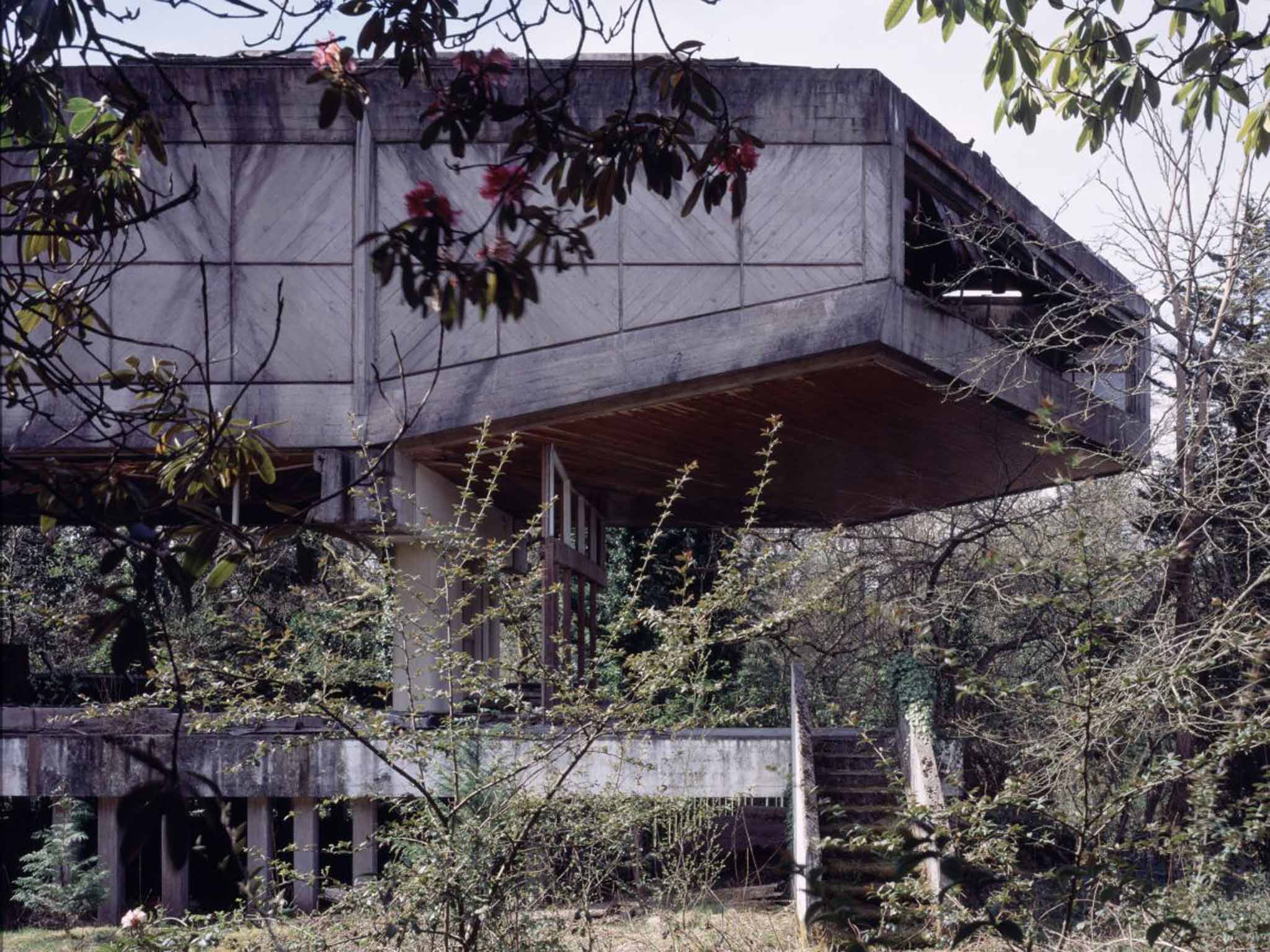
Two of those in the name of Glasgow architects Gillespie, Kidd and Coia had already died when the remaining partner, Jack Coia, employed Isi Metzstein and Andy MacMillan in the 1950s. Prior to the war, the firm had worked with the Scottish Catholic Archdiocese in designing new churches, and flush with a rise in parishioners in the 1950s and the development of new towns to feed the exodus from Glasgow's post-war redevelopment, the contract was reactivated. Metzstein, an atheist German-Polish Jew who had escaped Berlin by way of Kindertransport in 1939, and MacMillan, of a Scots Presbyterian family, were put in charge of the development of these buildings.
The firm designed churches across the south of Scotland, for example in the new towns of Glenrothes and East Kilbride, and in the Glasgow suburbs of Dennistoun and Easterhouse. With these and other projects such as the University of Cambridge's Robinson College and extensions to the University of Oxford's Wadham College they made their name. But it's St Peter's Seminary which is regularly cited as their greatest achievement when the idea is floated – as it is often – that the duo were Scotland's most important 20th century architects after Charles Rennie Mackintosh.
In 1972, the Scottish documentary filmmaker Murray Grigor made Space and Light, a straightforward documentary film showing off the unique aspects of St Peter's, which drew as much inspiration from the design of Le Corbusier as it did the Scots tradition of Mackintosh. The face of the accommodation block was starkly tiered, while there were heavy concrete arches in the ceiling and curved ramps leading upwards; as MacMillan put it, the idea of a “promenading” building borrowed from Le Corbusier. In 2009 Grigor created Space and Light Revisited, a shot-for-shot recreation of the original which is starkly haunting.
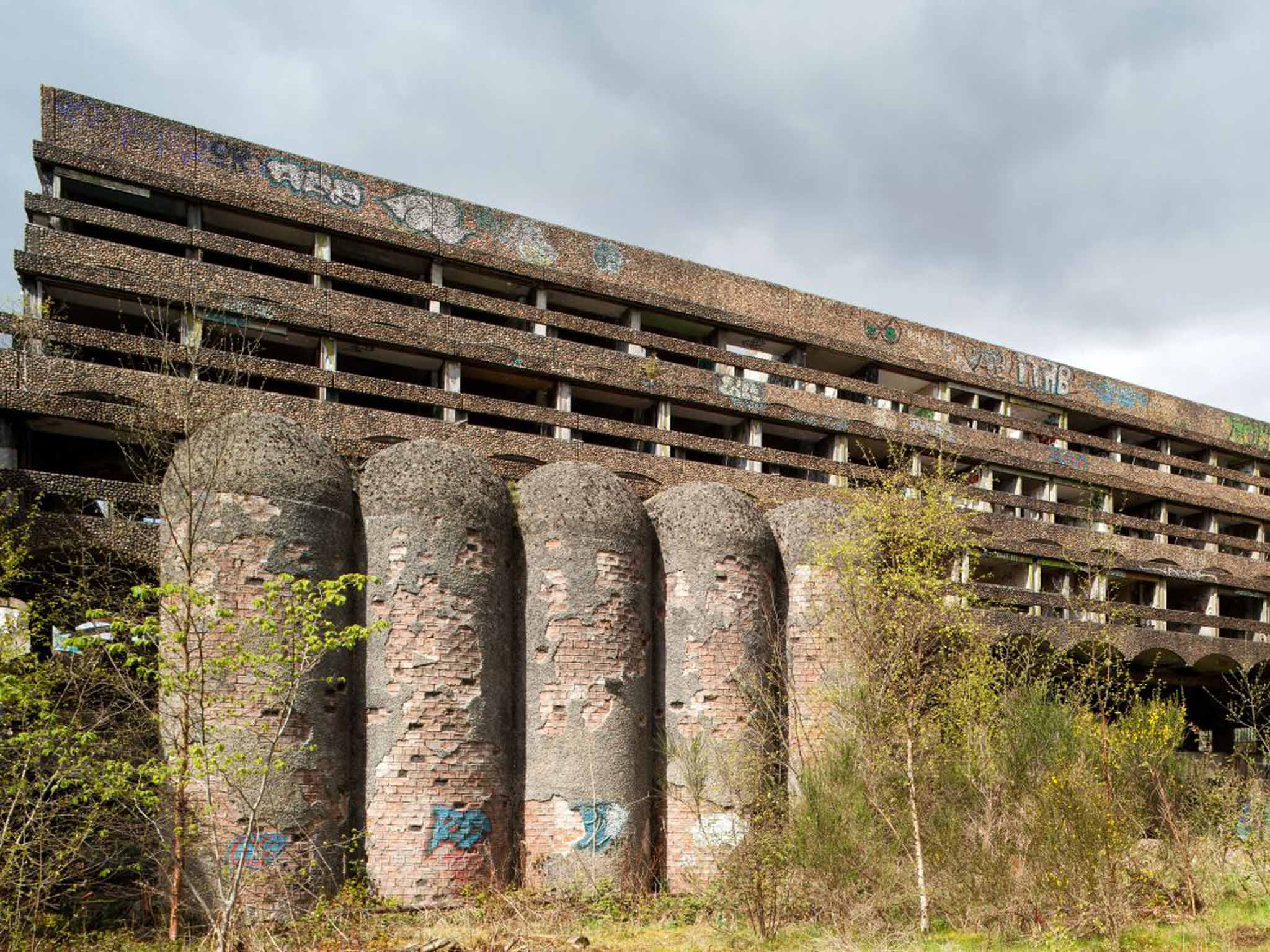
In the new version the serene chapel has become a post-apocalyptic, graffiti-smeared hideout, with camera tilts upwards to the now non-existent roof replaced by shots of the sky. Metzstein and MacMillan are both dead now (the former in 2012, the latter in 2014), but the fate of the building troubled them. “I actually can't believe they let it go to pieces the way they did,” MacMillan said in an interview in his later years. “I was bloody near crying when I saw the sheer malevolence of the destruction of the building… it might have been kinder to knock it down.”
When Farquhar and I speak, he's on the line from his office in Glasgow; it's some time until Hinterland's opening and he tells me that the extensive process of asbestos removal is still under way onsite. NVA has a conditional agreement with the Archdiocese in Glasgow to buy the site once they hit their funding target of £10m, a substantial amount of which has come from private donors, yet they have already had to pay significant amounts to prevent the collapse of vaults running underneath the building.
Hinterland, which runs for ten days this month, can be thought of almost like a pilgrimage, and a reintroduction to this building for the people of Scotland. It will feature a new music composition by Rory Boyle (“It draws on spiritual traditions from choral work going right back to 9th-century plain chant through to the more dissonant avant-garde work of the 20th century,” says Farquhar) with a performance from St. Salvator's Chapel Choir of the University of St Andrews, installations from the 85A Collective, and much more.
The long-term plan is to reopen permanently, renovating part of the building to provide performance space and artist's quarters, and to arrest the decay elsewhere to provide a safe heritage destination in its own right. “A lot of really interesting work is taking place outside galleries, outside theatres, outside traditional 19th-century bourgeois ways of presenting art and culture,” says Farquhar.
“What I define as public art engages directly with a place or a group of people in a public setting, and it's where a lot of the more interesting work is taking place – work that's more directly linked to people's experience of the everyday, rather than because they've chosen to walk into a gallery or a museum.”
It's the kind of work he wants to see created here, in a place he says is still distinctly special despite all that's been done to it. “There's something in the bones of St Peter's that still has an atmosphere which transcends the incredible violence that's been acted upon it by three intentional fires and a huge amount of vandalism and theft. Metzstein and MacMillan really got something right in terms of the way they modulated light and how it came into the building, it feels like nowhere else I've been in the UK. Even in the secular setting I think there's something about ritual, about that sense of using prescribed physical movements and text and speech and song in a way that can intensify and deepen people's experience of a particular location, and we're definitely playing with that in Hinterland.”
In a ruin of the past such as this, believes Farquhar, we can also more easily grasp a hold on where we need to be in the present. “I guess the question which a lot of us are asking is: what sort of world do we live in now?” he says. “As an artist I don't want to make peripheral work which sits within an elite, hermetically sealed bubble for those who've got time to dwell on the finer points of art. As an artist I want to engage with the horror and complexity of the world as it is now and try and do something that is relevant, and create a space where people can come and can debate, see work, be inspired, find out things for themselves. And all of this in a space that was designed for elevated thinking to take place.”
Hinterland is at the ruin of St Peter's Seminary, Cardross Estate, near Helensburgh, Scotland, and runs from this Friday to Sunday 27 March. hinterland.org
Join our commenting forum
Join thought-provoking conversations, follow other Independent readers and see their replies
Comments